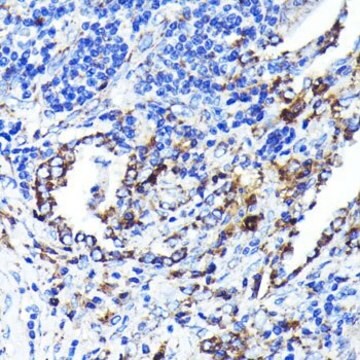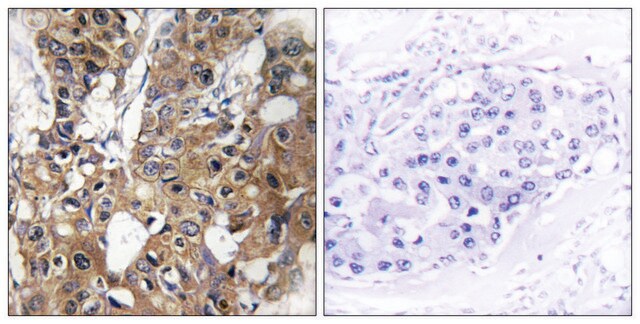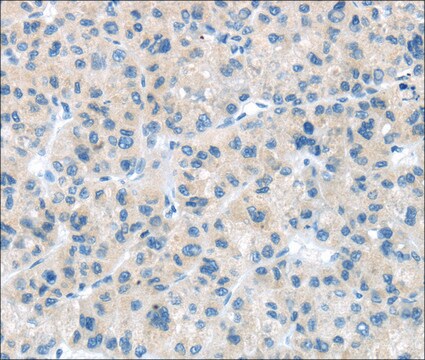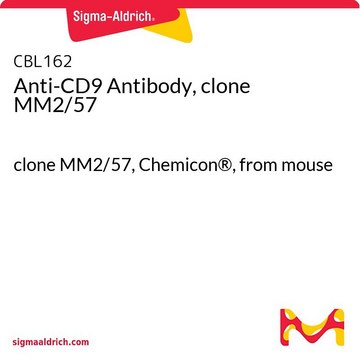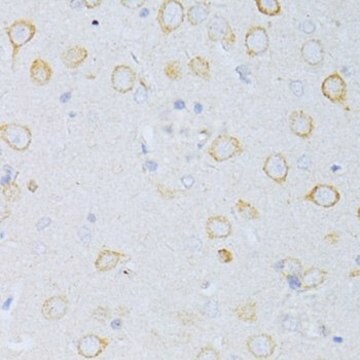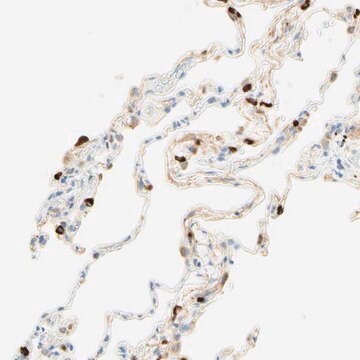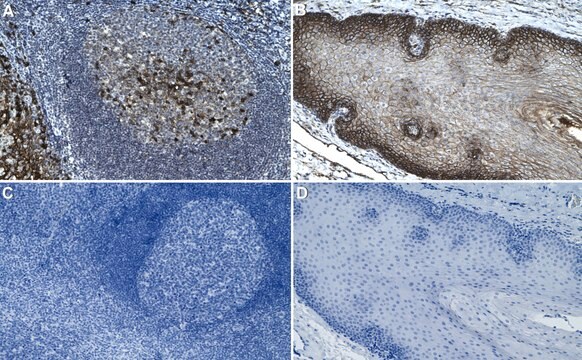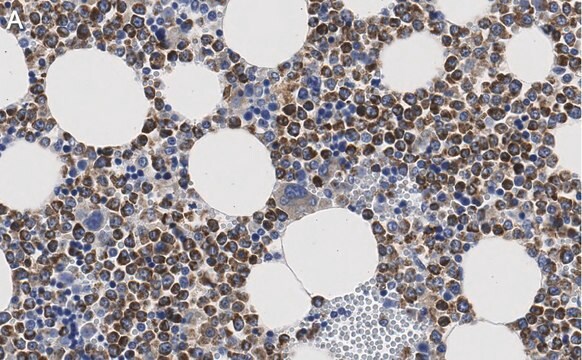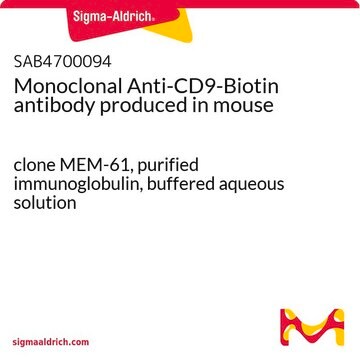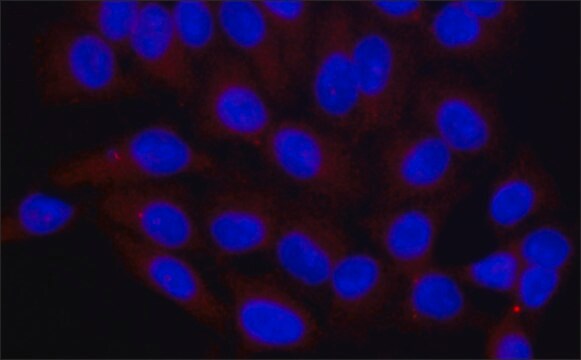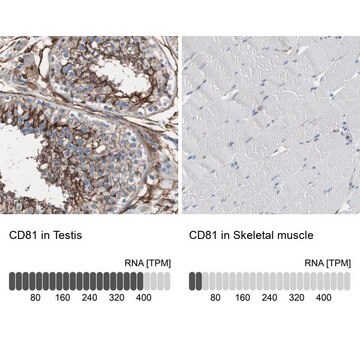C9993
Anti-CD9 antibody produced in rabbit
~1 mg/mL, affinity isolated antibody, buffered aqueous solution
Sinônimo(s):
Anti-BA2, Anti-BTCC-1, Anti-DRAP-27, Anti-GIG2, Anti-Growth-inhibiting gene 2 protein, Anti-Leukocyte antigen MIC3, Anti-MRP-1, Anti-Motility related protein, Anti-TSPAN29, Anti-p24 antigen
About This Item
Produtos recomendados
fonte biológica
rabbit
conjugado
unconjugated
forma do anticorpo
affinity isolated antibody
tipo de produto de anticorpo
primary antibodies
clone
polyclonal
Formulário
buffered aqueous solution
peso molecular
antigen ~25 kDa
reatividade de espécies
human, mouse, rat
concentração
~1 mg/mL
técnica(s)
immunohistochemistry: 1:100-1:250
western blot: 1:500-1:1,000
nº de adesão UniProt
Condições de expedição
dry ice
temperatura de armazenamento
−20°C
modificação pós-traducional do alvo
unmodified
Informações sobre genes
human ... CD9(928)
mouse ... Cd9(12527)
rat ... Cd9(24936)
Descrição geral
Imunogênio
Aplicação
- immunostaining
- identification of hypoxia-induced mesenchymal stem cells (MSC-MVs)
Ações bioquímicas/fisiológicas
Descrição-alvo
forma física
Exoneração de responsabilidade
Não está encontrando o produto certo?
Experimente o nosso Ferramenta de seleção de produtos.
Código de classe de armazenamento
10 - Combustible liquids
Ponto de fulgor (°F)
Not applicable
Ponto de fulgor (°C)
Not applicable
Equipamento de proteção individual
Eyeshields, Gloves, multi-purpose combination respirator cartridge (US)
Escolha uma das versões mais recentes:
Já possui este produto?
Encontre a documentação dos produtos que você adquiriu recentemente na biblioteca de documentos.
Os clientes também visualizaram
Nossa equipe de cientistas tem experiência em todas as áreas de pesquisa, incluindo Life Sciences, ciência de materiais, síntese química, cromatografia, química analítica e muitas outras.
Entre em contato com a assistência técnica